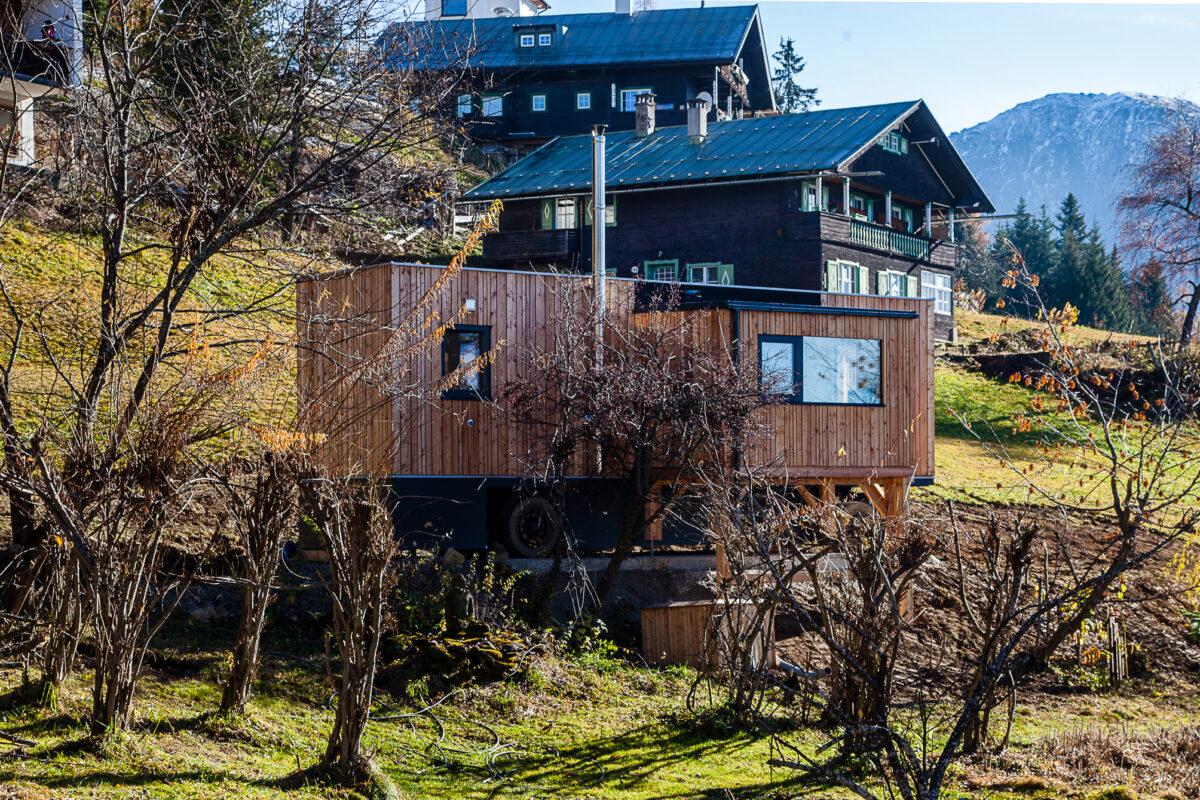Tiny houses have become increasingly popular in recent years. They seem to be a solution to many problems in today’s real estate market. Not only are they said to save space, materials and money, but also to be sustainable and promote a more conscious (minimalist) lifestyle. But are they really more sustainable than conventional housing? (IMAGE ©Biohotel Grafenast)
What is a tiny house?
There is no standard definition for tiny houses or micro-houses. The association Mikrohaus GMBH, for example, defines them as full-fledged buildings with a floor area of 15 to 45 m2, including kitchen, bathroom and sleeping area. While in the USA they are described as a house with a maximum floor area of 37 m2. What all definitions have in common is a size of less than 50 m2. They can be stationary, semi-stationary, or mobile structures with road permits. This is due to the fact that tiny houses are often not permanently anchored to the ground.
Where is the trend coming from?
Tiny houses have always existed in one form or another, but what we now call the tiny house movement really took off in the U.S. after the economic crisis of 2007. Before spreading to other countries in the following years. Back then, cost was the main reason for people to downsize their homes. Today, the desire for a more minimalist, conscious and, above all, sustainable lifestyle is also a factor. And the desire for freedom. Not only because ownership is an obligation, but also because many versions promise the ability to set up camp anywhere in the world.
Are tiny houses really sustainable?
Whether a tiny house is truly sustainable depends on many different factors and is constantly debated. It is interesting to note that in the USA they are considered sustainable, while in Germany there are doubts. It is true that they require fewer raw materials to build. So it’s cheaper to build them entirely from sustainable materials. However, they consume much more space and energy, especially when compared to an apartment building.
This sounds contradictory at first, but it quickly becomes clear when you read this blog post by Wortmann and Weber. The main problem is that a tiny house consists only of exterior walls, through which all heat is lost. Unlike an apartment building, where heat is transferred to other apartments or rooms. Since tiny houses are also often freestanding and single-story, they take up more space than an apartment building. Finally, there is the issue of a suitable plot of land, because they are usually not designed for the size of a tiny house.
Where a tiny house scores, however, is in its impact on the ecological footprint of its occupants, as this dissertation suggests. Downsizing can have a positive effect on consumer behavior, as the lack of space means people buy less, encouraging minimalism. Participants also consciously used less energy and generated less waste.
Overall, it is difficult to give a general answer to this question, as it depends on the specific situation. However, they lag behind apartment buildings in almost all criteria and are therefore at the very least not the most sustainable form of housing.
PS: If you would like to try living in a tiny house, you can do so on the grounds of the Biohotel Grafenast in Tyrol. The tiny house on offer here is built entirely from local wood and has an organic toilet and a wood-burning stove. As an added bonus, guests staying here can take advantage of the wellness and culinary offerings of the Biohotel.




